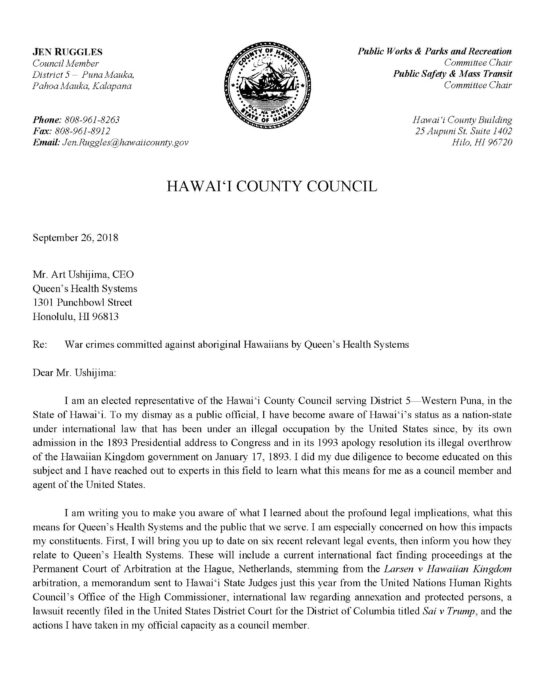The following resolution was adopted by the IADL Council, in virtual session, on 7 February 2021:
IADL RESOLUTION CALLING UPON THE UNITED STATES TO IMMEDIATELY COMPLY WITH INTERNATIONAL HUMANITARIAN LAW IN ITS PROLONGED OCCUPATION OF THE HAWAIIAN ISLANDS—THE HAWAIIAN KINGDOM
The International Association of Democratic Lawyers (IADL) is a non-governmental organization of human rights lawyers founded in 1946, with member associations throughout the world and with consultative status in ECOSOC. IADL is dedicated to upholding international law and promoting the tenets of the UN Charter in furtherance of peace and justice.
The IADL strongly condemns the January 1893 invasion of the Hawaiian Kingdom by the United States and its subsequent unlawful and prolonged occupation to date, a clear violation of customary international law at the time, which is currently set out in Article 2(4) of the Charter of the United Nations prohibiting the use of force. The IADL has always been a proponent of the rule of law and a State’s obligation to comply with international humanitarian law, which includes the law of occupation.
In 2001, the Permanent Court of Arbitration, in Larsen v. Hawaiian Kingdom, stated “in the nineteenth century the Hawaiian Kingdom existed as an independent State recognized as such by the United States of America, the United Kingdom and various other States, including by exchanges of diplomatic or consular representatives and the conclusion of treaties.” [1] The Hawaiian Kingdom currently has treaties with Austria, Belgium, Bremen, Denmark, France, Germany, Great Britain, Hamburg, Hungary, Italy, Japan, Luxembourg, Netherlands, Norway, Portugal, Russia, Spain, Sweden, Switzerland and the United States. [2] The Hawaiian Kingdom also became a member of the Universal Postal Union on January 1, 1882.
After completing an investigation into the United States role in the overthrow of the Hawaiian Kingdom government on January 17, 1893, President Cleveland apprised the Congress of his findings and conclusions. In his message to the Congress, he stated, “And so it happened that on the 16th day of January, 1893, between four and five o’clock in the afternoon, a detachment of marines from the United States steamer Boston, with two pieces of artillery, landed at Honolulu. The men, upwards of 160 in all, were supplied with haversacks and canteens, and were accompanied by a hospital corps with stretchers and medical supplies. This military demonstration upon the soil of Honolulu was of itself an act of war.” [3] The President concluded, that “the military occupation of Honolulu by the United States on the day mentioned was wholly without justification, either as an occupation by consent or as an occupation necessitated by dangers threatening American life and property.” [4]
This invasion coerced Queen Lili‘uokalani, executive monarch of the Hawaiian Kingdom, to conditionally surrender to the superior power of the United States military, where she stated, “Now, to avoid any collision of armed forces and perhaps the loss of life, I do, under this protest, and impelled by said force, yield my authority until such time as the Government of the United States shall, upon the facts being presented to it, undo the action of its representatives and reinstate me in the authority which I claim as the constitutional sovereign of the Hawaiian Islands.” The President acknowledged that by “an act of war…the Government of a…friendly and confiding people has been overthrown.” [5]
Through executive mediation between the Queen and the new U.S. Minister to the Hawaiian Islands, Albert Willis, that lasted from November 13, 1893 through December 18, 1893, an agreement of peace was reached. [6] According to the executive agreement, by exchange of notes, the President committed to restoring the Queen as the constitutional sovereign, and the Queen agreed, after being restored, to grant a full pardon to the insurgents. Political wrangling in the Congress, however, blocked President Cleveland from carrying out his obligation of restoration of the Queen.
Five years later, at the height of the Spanish-American War, President Cleveland’s successor, William McKinley, signed a congressional joint resolution of annexation on July 7, 1898, unilaterally seizing the Hawaiian Islands for military purposes. In the Lotus case, the Permanent Court of International Justice stated that “the first and foremost restriction imposed by international law upon a State is that…it may not exercise its power in any form in the territory of another State.” [7]
This rule of international law was acknowledged by the Supreme Court in United States v. Curtiss-Wright, Corp. (1936), when the court stated, “Neither the Constitution nor the laws passed in pursuance of it have any force in foreign territory unless in respect of our own citizens, and operations of the nation in such territory must be governed by treaties, international understandings and compacts, and the principles of international law.” [8] In 1988, the U.S. Department of Justice’s Office of Legal Counsel concluded, it is “unclear which constitutional power Congress exercised when it acquired Hawaii by joint resolution.” [9]
Under international law, “a disguised annexation aimed at destroying the independence of the occupied State, represents a clear violation of the rule preserving the continuity of the occupied State.” [10]
Despite the limitations of United States legislation, the Congress went ahead and enacted the Territorial Act (1900) changing the name of the governmental infrastructure to the Territory of Hawai‘i. [11] Fifty-nine years later, the Congress changed the name of the Territory of Hawai‘i to the State of Hawai‘i in 1959 under the Statehood Act. [12] The governmental infrastructure of the Hawaiian Kingdom continued as the governmental infrastructure of the State of Hawai‘i.
On February 25, 2018, United Nations Independent Expert, Dr. Alfred M. deZayas, in his communication with members of the State of Hawai‘i Judiciary wrote, “I have come to understand that the lawful political status of the Hawaiian Islands is that of a sovereign nation-state in continuity; but a nation-state that is under a strange form of occupation by the United States resulting from an illegal military occupation and a fraudulent annexation. As such, international laws (the Hague and Geneva Conventions) require that governance and legal matters within the occupied territory of the Hawaiian Islands must be administered by the application of the laws of the occupied state (in this case, the Hawaiian Kingdom), not the laws of the occupier (the United States).” [13]
The IADL fully supports the National Lawyers Guild’s 2019 resolution that “calls upon the United States of America immediately to begin to comply with international humanitarian law in its prolonged and illegal occupation of the Hawaiian Islands.” [14] Together with the National Lawyers Guild (NLG):
- IADL strongly condemns the prolonged and illegal occupation of the Hawaiian Islands.
- IADL also condemns the unlawful presence and maintenance of the United States Indo-Pacific Command with its 118 military sites throughout the Hawaiian Islands.
- IADL calls for the United States to immediately comply with international humanitarian law and begin to administer the laws of the Hawaiian Kingdom as the occupied State.
- IADL calls on the legal and human rights community to view the United States presence in the Hawaiian Islands through the prism of international law and to roundly condemn it as an illegal occupation under international law.
- IADL supports the Hawaiian Council of Regency, who represented the Hawaiian Kingdom at the Permanent Court of Arbitration, in its efforts to seek resolution in accordance with international law as well as its strategy to have the State of Hawai‘i and its Counties comply with international humanitarian law as the administration of the Occupying State.
- IADL calls on all United Nations member States and non-member States to not recognize as lawful a situation created by a serious violation of international law, and to not render aid or assistance in maintaining the unlawful situation. As an internationally wrongful act, all States shall cooperate to ensure the United States complies with international humanitarian law and consequently bring to an end the unlawful occupation of the Hawaiian Islands.
The IADL recognizes that the United States’ violations of international humanitarian law have led to the commission of war crimes and human rights violations in the Hawaiian Islands. The IADL also recognizes that the civilian population in the Hawaiian Islands are “protected persons” and their rights during a belligerent occupation are vested in the 1949 Fourth Geneva Convention and the 1977 Additional Protocol.
For the restoration of international law and the tenets of the UN Charter, the IADL calls upon the United States to immediately comply with international humanitarian law and the law of occupation in its prolonged and illegal occupation of the Hawaiian Islands.
The IADL fully supports the NLG’s November 10, 2020 letter to State of Hawai‘i Governor David Ige urging him to “proclaim the transformation of the State of Hawai‘i and its Counties into an occupying government pursuant to the Council of Regency’s proclamation of June 3, 2019, in order to administer the laws of the Hawaiian Kingdom. This would include carrying into effect the Council of Regency’s proclamation of October 10, 2014 that bring the laws of the Hawaiian Kingdom in the nineteenth century up to date.” [15]
IADL reiterates that supporting the tenets of the UN Charter also means that member States must comply with the Articles of State Responsibility for Internationally Wrongful Acts (2001). [16] The U.S. violation of the Hawaiian Kingdom’s sovereignty and its failure to comply with international humanitarian law for over a century is an internationally wrongful act. As such, member States have an obligation to not “recognize as lawful a situation created by a serious breach…nor render aid or assistance in maintaining that situation,” [17] and member States “shall cooperate to bring to an end through lawful means any serious breach [by a member State of an obligation arising under a peremptory norm of general international law].” [18]
To download a copy of the IADL resolution go to this link.
[1] Larsen v. Hawaiian Kingdom, 119 Int’l L. Reports 566, 581 (2001). Case description for the Larsen case online at https://pca-cpa.org/en/cases/35/.
[2] International Treaties between the Hawaiian Kingdom and other Powers (online at https://hawaiiankingdom.org/treaties.shtml).
[3] President Cleveland’s Message to the Congress 451 (December 18, 1893) (online at https://hawaiiankingdom.org/pdf/Cleveland’s_Message_(12.18.1893).pdf).
[4] Id., 452.
[5] Id., 456.
[6] Executive Agreement, by exchange of notes, between President Cleveland and Queen Lili‘uokalani (December 18, 1893) (online at https://hawaiiankingdom.org/pdf/EA_2(HI%20Claim).pdf).
[7] Lotus, PCIJ Series A, No. 10, 18 (1927).
[8] United States v. Curtiss-Wright, Corp., 299 U.S. 304, 318 (1936)
[9] Douglas W. Kmiec, “Legal Issues Raised by Proposed Presidential Proclamation To Extend the Territorial Sea,” 12 Op. O.L.C. 238, 252 (1988) (online at https://hawaiiankingdom.org/pdf/1988_Opinion_OLC.pdf).
[10] Krystyna Marek, Identity and Continuity of State in Public International Law 110 (2nd ed., 1968).
[11] An Act To provide a government for the Territory of Hawaii, 31 Stat. 141 (1900).
[12] An Act To provide for the admission of the State of Hawaii into the Union, 73 Stat. 4 (1959).
[13] Letter from U.N. Independent Expert Dr. deZayas to Members of the Judiciary of the State of Hawai‘i (25 Feb. 2018) (online at https://hawaiiankingdom.org/pdf/Dr_deZayas_Memo_2_25_2018.pdf).
[14] NLG Calls Upon US to Immediately Comply with International Humanitarian Law in its Illegal Occupation of the Hawaiian Islands (January 13, 2020) (online at https://www.nlg.org/nlg-calls-upon-us-to-immediately-comply-with-international-humanitarian-law-in-its-illegal-occupation-of-the-hawaiian-islands/).
[15] NLG letter urges implementation on international law in U.S.-occupied Hawaiian Kingdom (2020) (online at https://nlginternational.org/2020/11/nlg-letter-urges-implementation-of-international-law-in-u-s-occupied-hawaiian-kingdom/).
[16] United Nations, Responsibility of States for Internationally Wrongful Acts (2001) (online at https://legal.un.org/ilc/texts/instruments/english/draft_articles/9_6_2001.pdf).
[17] Id., Article 41(2).
[18] Id., Article 41(1).

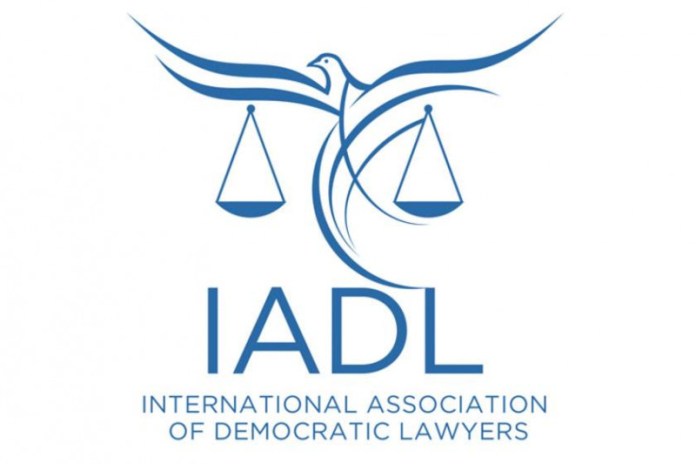
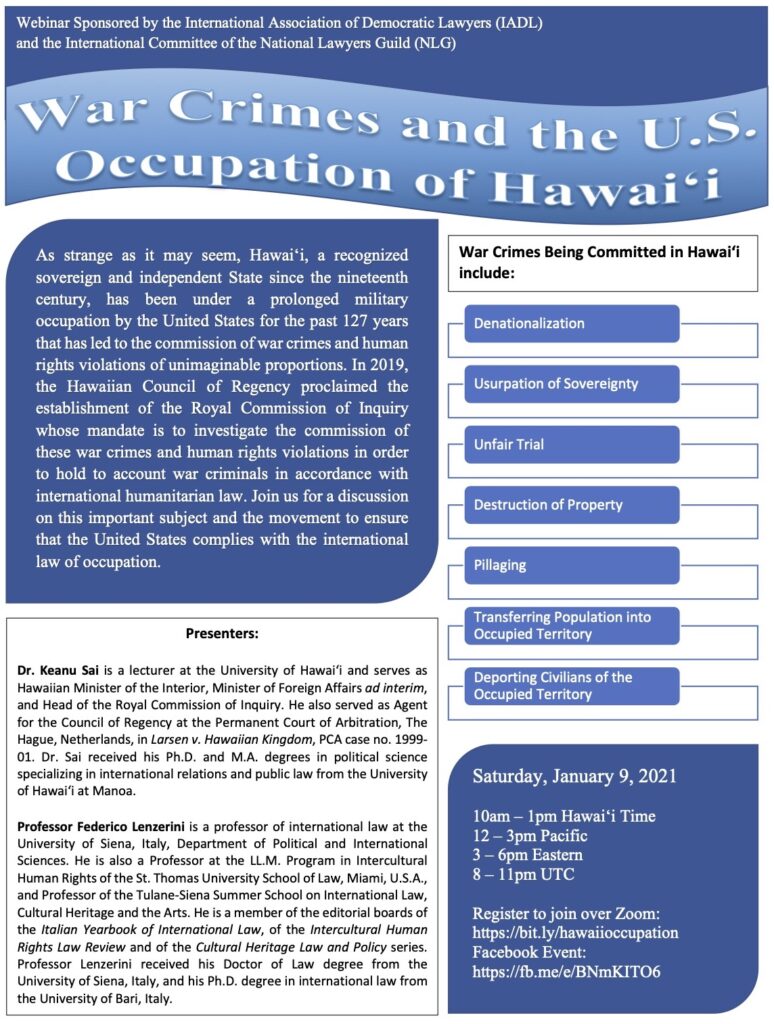
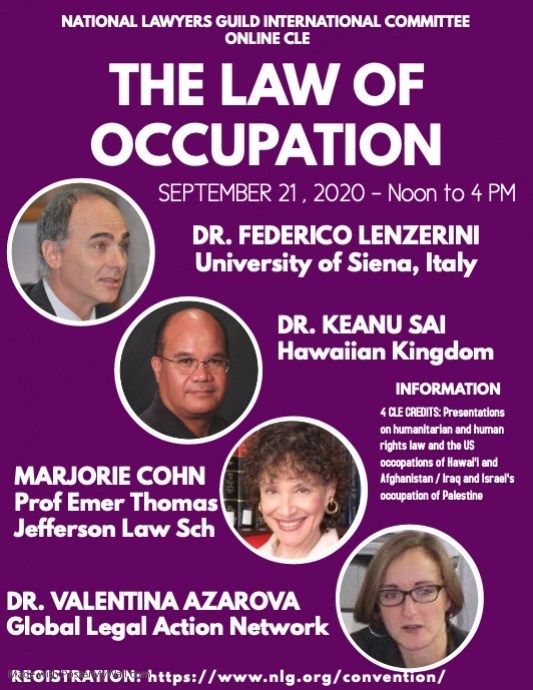
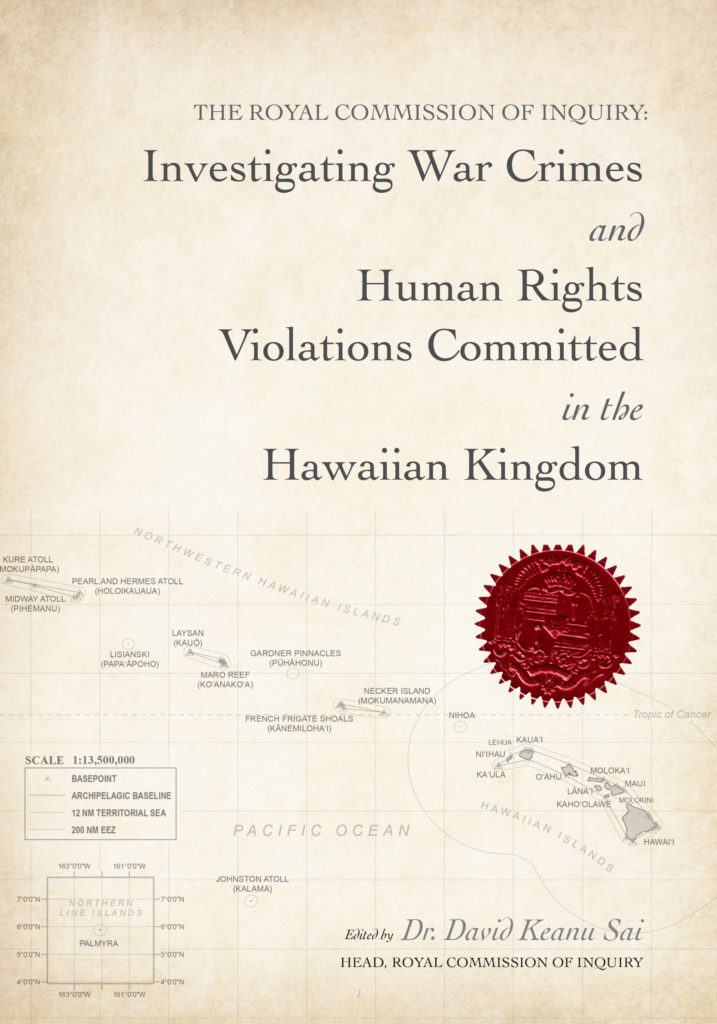
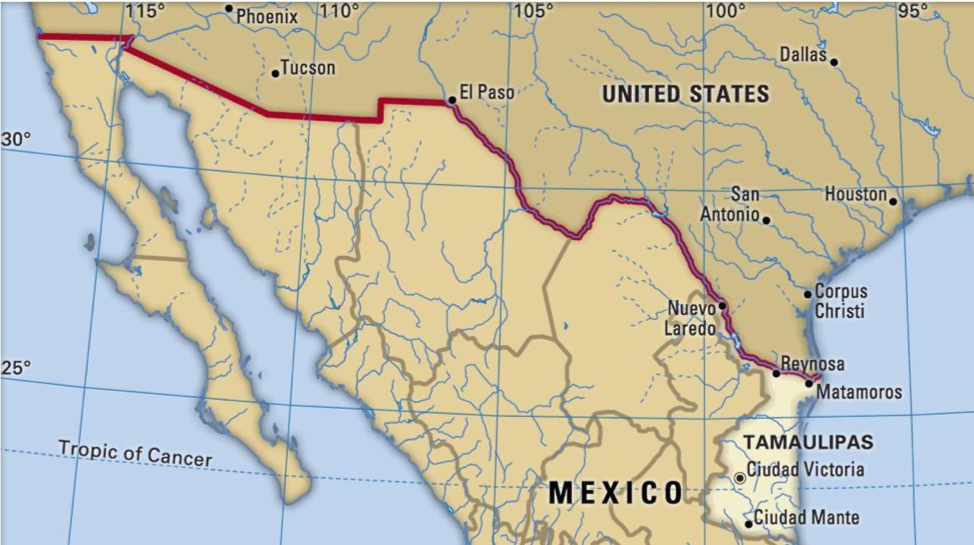
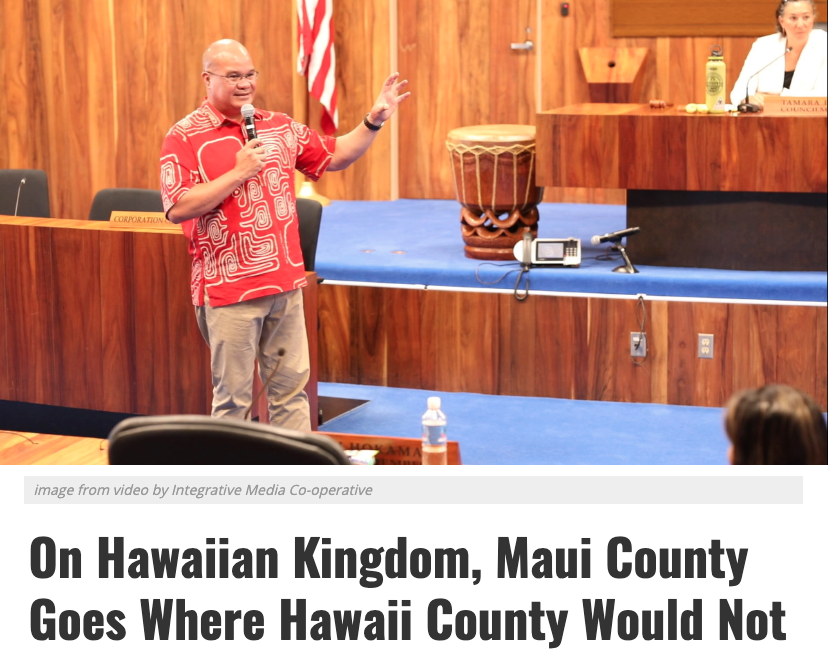
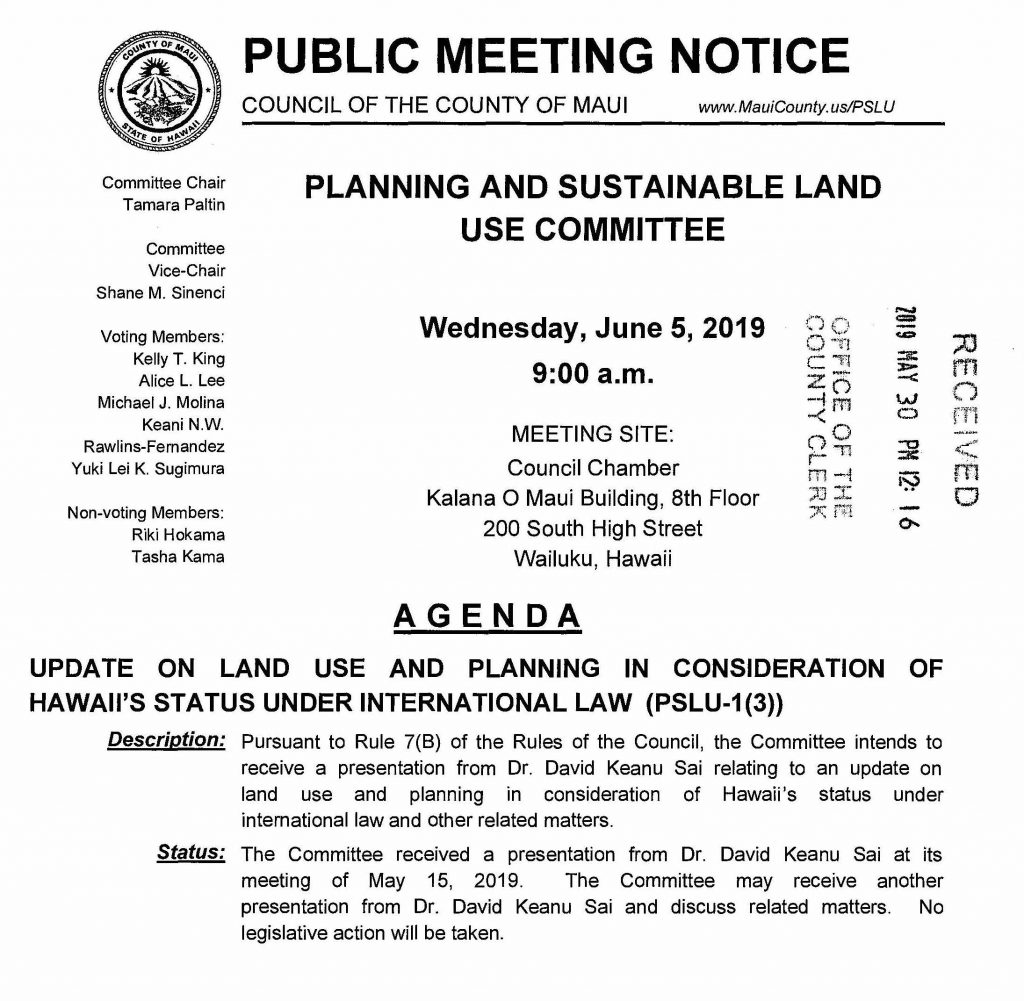
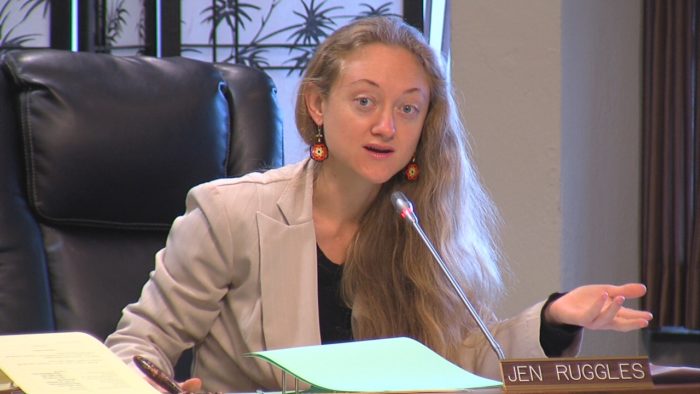 Council member Jen Ruggles released a
Council member Jen Ruggles released a 